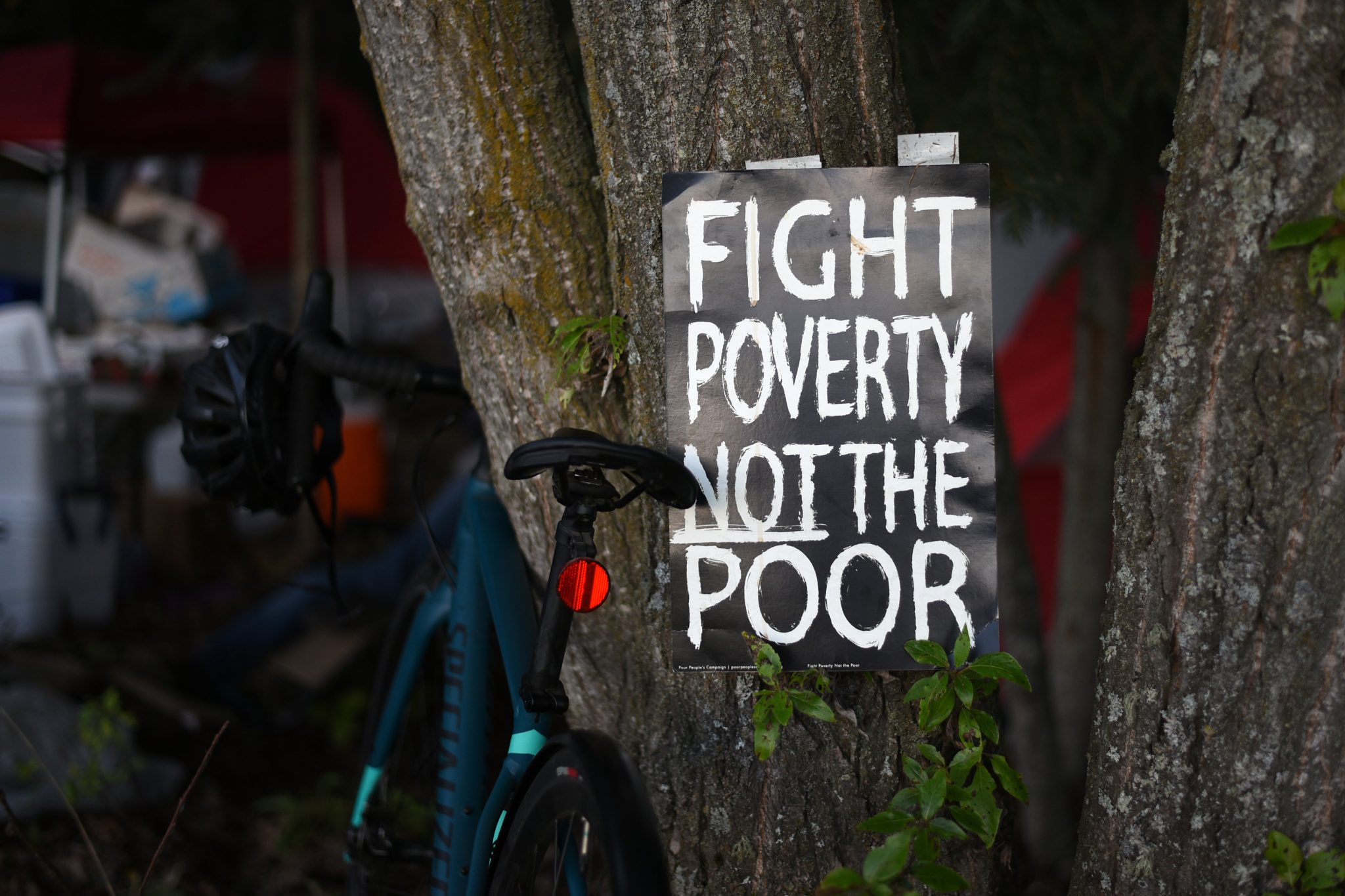Just a few days ago, the Southern Poverty Law Center (SPLC) issued its latest report, Sheltering Injustice, calling attention to the criminalization of homelessness. They used data from Atlanta, Georgia for that report, but there’s no need to look beyond our own communities to find governments that at best fail to care and assist people experiencing homelessness, at worst abuse them.
You see, also just a few days ago – within hours of the SPLC report landing – our neighbor, Mary Holly Waters, died in a tent in Bristol Township. According to reports, she’s the fifth person to die while experiencing homelessness since this time last year. That same news report quotes advocates voicing dismay that Mary Holly Waters chose to stay in her tent rather than journey to one of the warming shelters staffed by area volunteers on brutally cold nights.
READ: In Bucks County, a Small Church Strives to Help the Ones Around Them
Why not go inside when you live in a tent in the woods off Route 13? There are countless reasons – all tied to fear. But if you’d already lost your home, you’d be afraid, too. I’ve got a short list here. I don’t know if any of these applied to Mary Holly Waters, but they apply to others. Everywhere. All the time.
– Privacy. In a mass sheltering situation, there is none. Emergency cold weather shelters require that everyone sleep – together.
– Victimization. If you were going to sleep on a floor with 50 people, you’d probably like to pick that fifty. Many people experiencing homelessness are victims of violence – domestic or otherwise. And sleeping next to unknown individuals, well, it’s a bridge too far.
– Pets. People experiencing homelessness – who have pets – won’t leave them. Emergency shelters (most shelters) don’t allow animals.
– Leaving belongings behind. Once a person has made a home, it becomes the place where they keep their stuff. If they go into a shelter, they can be robbed.
– The local authorities might destroy their camp.
People experiencing homelessness in Bucks County – especially those who last year inhabited the camp located behind the Lower Bucks County Government Services Center – know this all too well. On June 13, 2023, a number of people had their homes destroyed and their belongings discarded. Reporting from the event cited, “28 tents and various belongings and debris were removed from the woods.”
What’s contained in the debris? The same things you keep in your home. Whatever’s at your house is what unhoused people have in theirs – just a lot less of it. Books, pictures, identification, correspondence, clothing, food and some shortcuts to prepare it, prescription medications … you get the picture.
READ: Proposed Law Aims to Keep Pennsylvania’s Homeless Students in School
Thankfully for people who have the privilege associated with four walls and a roof, no one may walk – legally – into a home, trash the contents and loot the premises. If someone used heavy machinery to destroy a housed person’s belongings and toss them in the trash, the victims would call the police. When municipalities destroy camps, the police are employed to make sure the operation goes smoothly. Often community leaders instruct the police to arrest anyone who makes a fuss or tries to protect their home.
Last week – the night Mary Holly Waters died – in an ill-fated effort to identify the number of people in the nation experiencing homelessness, tens of thousands of public workers and volunteers went into the woods, back streets and shelters of the U.S., in search of the desperately unhoused. Homelessness In Bucks County: Right Under Our Noses | @BucksCoBeacon reporter @PatHLaMarche accompanied local homeless advocates for their Point in Time count to identify and assist local unhoused individuals. https://t.co/JW19vDTIRu— BucksCountyBeacon (@BucksCoBeacon) January 25, 2024
You have to admit, finding people who fit the narrow definition homelessness – living outside and/or in a place not fit for human habitation, gets considerably more difficult when the authorities regularly destroy the camps where these folks live. You wouldn’t have to throw my insulin, sleeping bag or birth certificate away too many times for me to learn to hide just a little bit better next time.
Maybe the federal government shouldn’t try looking for people who’ve been trained by local authorities to hide, resist assistance, and fear being sheltered.
READ: The Importance Of Home
Harvard University’s Joint Center for Housing Studies determined in 2022 that half of all renters – well – can’t afford their rent. Maybe that’s a better number to use if the feds want to estimate the number of people at risk of homelessness.
Right now, the Department of Housing and Urban Development sends Bucks County roughly $3.6 million (or approximately the selling price of eight single family homes in the county) to help people like Mary Holly Waters. Obviously, it’s not enough. Because it’s not enough to help Mary, and everyone like her, have a home.
